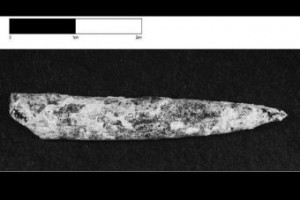An Australian man in search of a toilet while surveying gorges in an area 550 kilometres north of Adelaide, accidentally stumbled across the oldest-known evidence of an Aboriginal settlement in existence.
The site, discovered by Adnyamathanha elder Clifford Coulthard, bears evidence that Aboriginal Australians settled there 49,000 years ago — at least 10,000 years earlier than previously believed.
The settlement, also known as Warratyi, provides the first reliably-dated evidence of human interaction with large or giant animals known as megafauna.
Giles Hamm, a consultant archaeologist, lead author and doctoral student at La Trobe University who discovered the site together with Mr. Coulthard, admitted that initially, the pair of researchers had no idea of the importance of their find.
Among their discoveries were bones from the extinct giant wombat-like Diprotodon optatum, as well as eggs from an ancient giant bird.
Hamm’s co-author, Professor Gavin Prideaux, said that these discoveries were evidence that humans were not responsible for the extinction of megafauna, as previously believed. “The find undermines one of the supposed pillars of support for climate change, not humans, causing the extinctions, because the site shows (that) humans lived alongside these animals and hunted them,” he said.
He also said that this chance discovery “smashed several paradigms about Indigenous Australians.”
Evidence shows that the Aborigines were one of the oldest populations in the world, and that they didn’t take 10,000 years to reach the southern part of the continent from the north, as was believed up until now.
Clifford Coulthard , who discovered the settlement, says that both he and the Adnyamathanha people, are proud and happy about the discovery. “It was the spirits who showed me the road,” he said.
Ask me anything
Explore related questions





